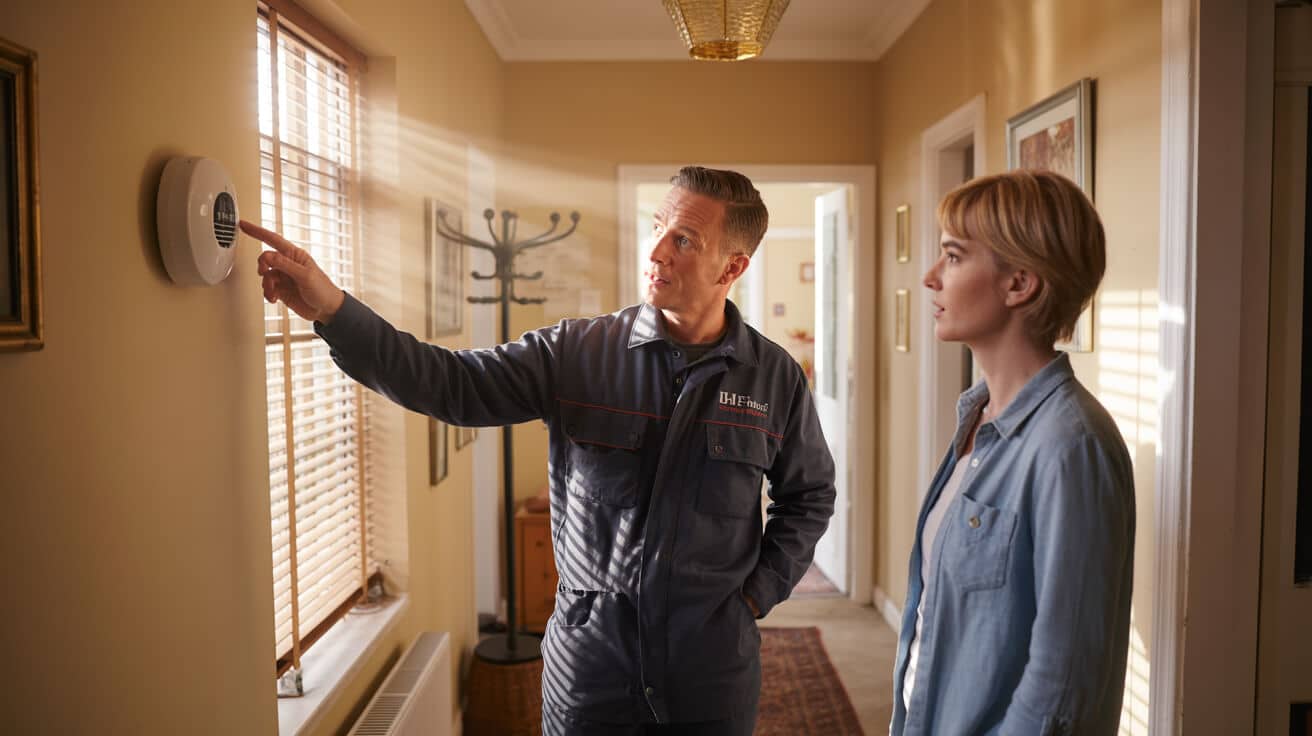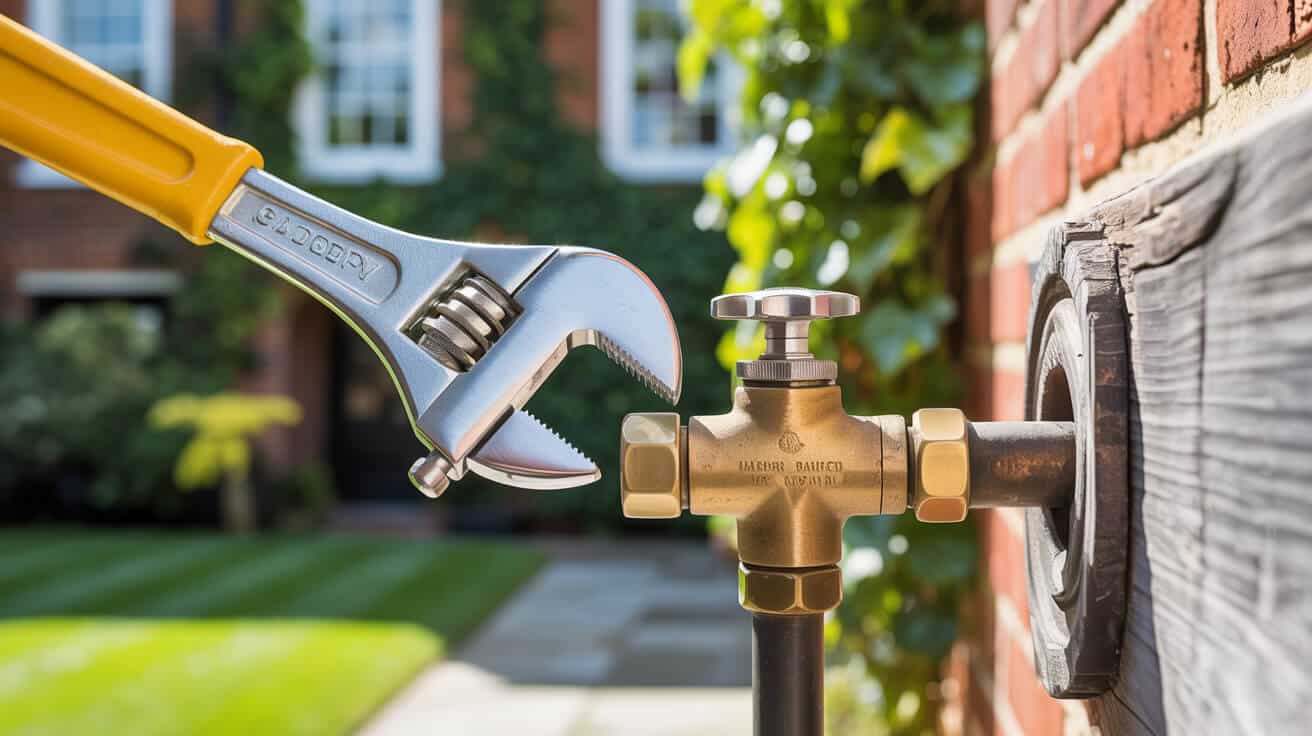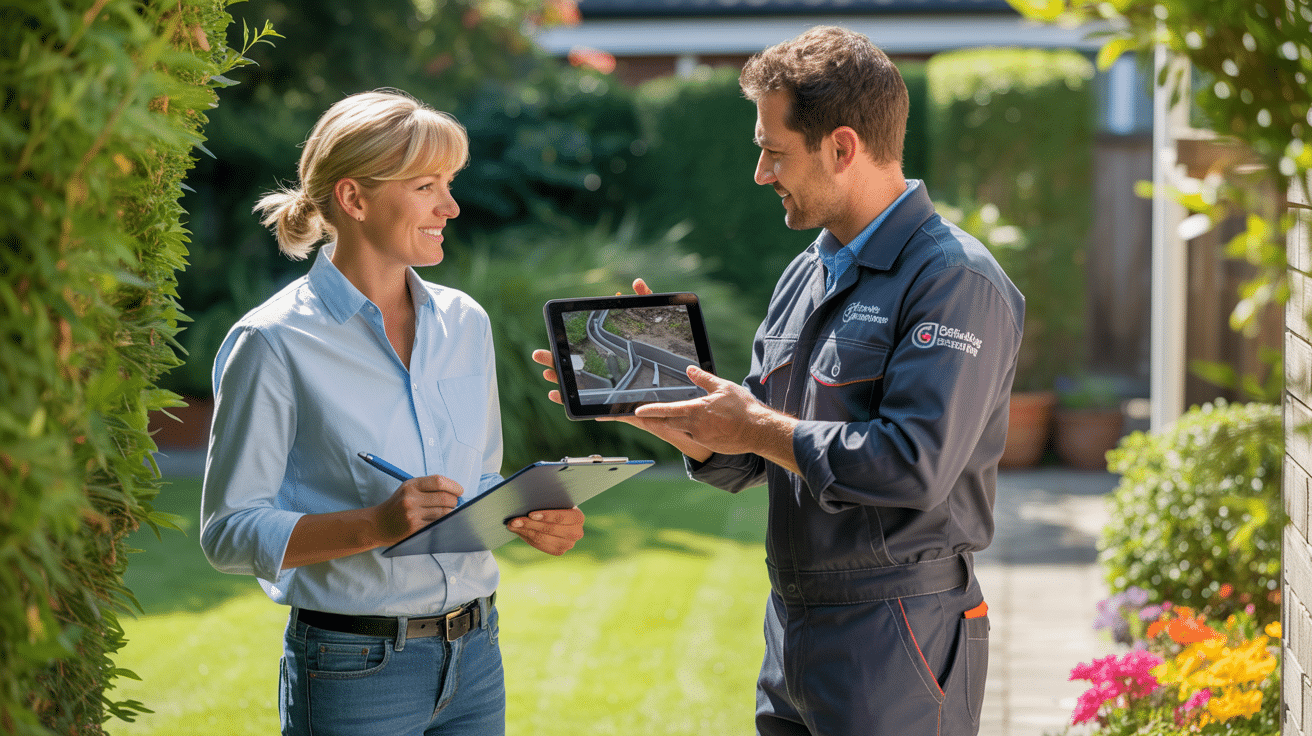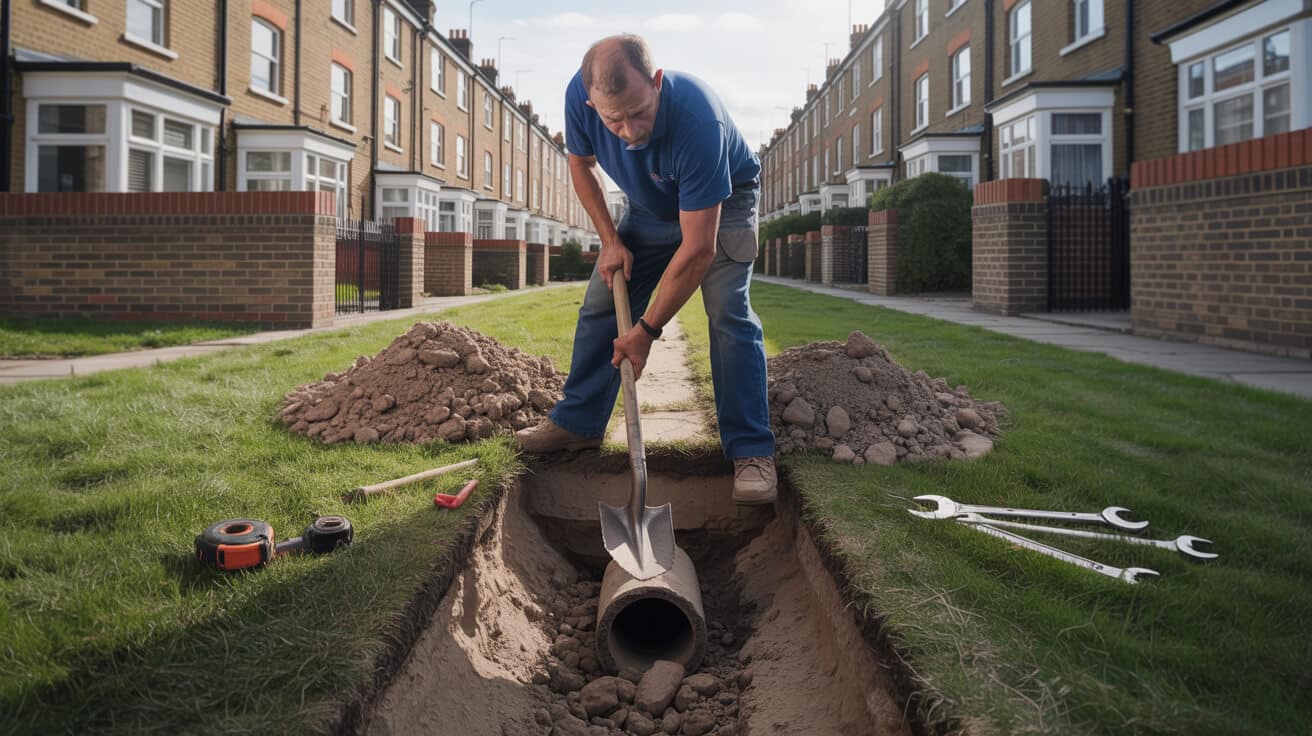 What Is a Thermostatic Radiator Valve (trv) and How Does It Work
What Is a Thermostatic Radiator Valve (trv) and How Does It Work

Why Should You Care About Thermostatic Radiator Valves? (And Why Your Comfort Might Be Leaking Away)
Step into any home, office or rental property on a chilly morning, and you’ll hear familiar complaints—the lounge bakes, the box room stays icy, and someone’s always arguing over the central thermostat. Yet behind every uneven patch of warmth—and every spike on your quarterly bill—is the same root cause: heating that keeps running just because one “master” stat thinks it’s cold. Every day, property owners, landlords, and facilities teams pour energy into empty rooms and wonder why the costs never seem to fall.
Heating unused rooms is just burning cash with none of the comfort.
The problem isn’t your maintenance, or even the age of your system. It’s how nearly all heating was designed before TRVs hit the scene. Thermostatic radiator valves are the unsung personal trainers of home comfort: cheap to fit, simple to use, and quietly brilliant at eliminating waste. Now, they’re not just best practice—they’re a compliance essential for energy ratings, a must-have for property managers facing audit, and the fastest “comfort upgrade” for any home or business.
If you’re grappling with uneven temperatures, rising bills, or portfolio compliance deadlines, TRVs should rise to the top of your list. Upgrading doesn’t require a new boiler or a team of engineers—just a switch in how each room is treated. Once TRVs are fitted, every area starts pulling its weight in comfort and savings.
What Is a Thermostatic Radiator Valve—and Why Isn’t the Main Thermostat Enough?

A Thermostatic Radiator Valve (TRV) is a clever device that attaches to the inlet of a radiator. It senses the air temperature near the radiator itself and regulates the flow of hot water into that specific unit. Unlike your master thermostat—usually stuck in the hallway or living room—the TRV operates from the local room, not a control box far away.
In plain English:
TRVs let you set the temperature in each room, independently, via a numbered dial on the valve. As air warms around the radiator, the TRV reduces or shuts off water to maintain your setting. As the room cools, it reopens, powering up the heat—no wires, apps or batteries required.
Why does this matter for your comfort (and sanity)? Because relying on a single thermostat means your heating switches off when one area hits the right temperature, regardless of how chilly or stuffy the rest of the home is. Bedrooms, north-facing box rooms, or high-ceilinged spaces are left behind, forcing everyone to “agree” to the average—often unhappy for all.
Letting each room choose its temperature saves money and stops the cold-spot blame game.
Industry experts agree:
“Fitting a TRV allows you to regulate each radiator individually, helping to increase comfort and save money on heating bills” (britishgas.co.uk).
With TRVs, you get real multi-zone control—each person or area can set their own level, so comfort is personal. For property managers and agents, this translates into fewer complaints, easier tenant onboarding, and a smoother shot at compliance paperwork (no more tricky energy rating queries).
How Does a TRV Actually Work? (The Hidden Engineering That Delivers Comfort)

Inside every TRV is a self-contained temperature sensor—sometimes a wax capsule, sometimes a liquid—that expands as air warms, pushing a pin down into the valve body. This compresses a spring and slowly closes the valve, throttling the radiator’s hot water supply. If the room gets too cold, the sensor contracts, the spring opens the valve, and more heat arrives, all without power or programming.
Key TRV components and simple checks:
| Component | Role | What To Check |
|---|---|---|
| Valve Body | Directs water into radiator | Secure fit, leak-free |
| Sensor Head | Reads local air temperature | Turns smoothly, not obstructed |
| Sensor Capsule | Expands/contracts with temp | Pin bounces freely |
Many issues, like a room staying cold or a stiff control knob, are down to a dirty sensor (blocked airflow) or a stuck pin (often solved by removing the head and wiggling the pin back and forth).
TRVs precisely match radiator output to room demand without constant adjustment. *(smartenergygb.org)*
Once set, TRVs perform a hands-off, mechanical balancing act. The result: smooth temperature gradients, happy occupants, and lower bills year-round—even in awkward old buildings or busy shared offices.
What Types of Heating Systems and Radiators Are TRVs Compatible With?

Most UK homes—whether flats, townhouses, or even older terraces—now have radiators and pipework suitable for TRVs. Standard copper pipe (15mm), white steel radiators, or compact panel rads? TRVs bolt up directly. More specialised setups, like microbore pipes (8/10mm), column radiators, or towel rails, just need an inexpensive adapter.
Compatibility at a glance:
- Standard panel radiators with 15mm or 10mm feed pipes
- Modern towel rails and designer rads (adapters may be required)
- Copper or plastic pipe infrastructure
- Commercial property radiators where zone control is vital
Reality check for older or quirky systems:
- Single-pipe or gravity-fed systems: TRVs may work, but flow dynamics sometimes require subtle plumbing tweaks—always ask for a proper engineer’s assessment.
- Never instal a TRV on the same radiator as the primary wall thermostat—this can confuse both your main heating controls and the TRV.
TRVs suit standard UK homes—double-check pipe size and system type before fitting for a smooth instal. *(traderadiators.com)*
Most basic TRV heads can be fitted in minutes. Swapping the valve body means draining part (or all) of the system—best left to accredited installers, especially in managed or multi-tenant properties, due to compliance and insurance needs.
How to Set and Use Your TRVs for the Perfect Balance of Comfort and Savings

Once fitted, TRVs are super straightforward: just dial in the number you want. The numbers typically run from 0 (“off” or frost mode) up to 5 (“fully open”). Each number roughly matches a temperature range—most bedrooms run happily at 1–2 (≈15–17°C), living areas at 3–4 (≈18–21°C), and storage spaces at zero or one.
Care less about the numbers and more about comfort. The key is to match each TRV to the actual use of a room. Bedrooms empty during the day? Set a lower number. Kitchens and living rooms in full use? Crank it up, but not past 4 unless you prefer subtropical!
Simple TRV usage rules:
- Leave the TRV set between 1–2 for bedrooms or little-used space.
- Avoid covering TRVs with curtains or furniture (blocks airflow, confuses sensor).
- *Don’t* keep fiddling—TRVs self-regulate all day.
- Record initial settings after a week—helps with troubleshooting later.
Dropping TRVs by one setting in little-used rooms can cut bills by up to 6% per degree. *(smartenergygb.org)*
If a room feels too cold even after adjusting the dial, check the head is fitted, the pin underneath can bounce up and down freely, and there’s no furniture or mess blocking the air around the sensor. Bleed the radiator first before suspecting the TRV itself.
Maintaining and Troubleshooting TRVs (Avoiding the Classic Cold Spot)

TRVs aren’t high-maintenance, but some practical habits will save time and money:
- Every spring and autumn, twist each TRV fully open then fully closed to keep the springs and pins mobile.
- Gently clean dust off the head—grime disrupts temperature reading.
- Log adjustments and date stamps for every valve—useful for compliance, grid energy audits, or when turnover is high (landlords, agents, offices).
Common symptoms and self-check steps:
- Cold radiator despite high TRV setting?
- Remove the TRV head and nudge the pin with your finger—it should move in and out with slight resistance.
- If stuck, a gentle tap or lubricant works, but any rust or repeated sticking means call in a pro.
- Inconsistent heating across a zone?
- Ensure no area rug, wardrobe, or sofa is blocking the TRV airflow.
- After bleeding rads or system maintenance, double-check all heads and dials are back on.
- Maintenance logs and visible problem photos streamline warranty claims and compliance for larger estates or managed portfolios.
The most common TRV problem is a sticky pin—easily restored if caught early. *(phpionline.co.uk)*
Thinking about smart TRVs, whole-building zoning, or app-driven scheduling? These units bring even more fine-tuning, especially in multi-tenant or commercial buildings, and futureproof your compliance certificates.
Smart TRVs, Compliance, and Upgrades for Landlords, Agents, and Businesses

Heating regulations are rising—landlords want improved EPCs, commercial sites expect zoned comfort as standard, and regular audits now track individual radiator control. TRVs are your ticket to future-ready compliance at modest expense.
- WRAS approval: Only WRAS-tested TRVs count as “certified”—this protects insurance, ensures rental compliance and passes inspection.
- G3/Part L/EPC: Zoned heating, with accessible records, is now a requirement for many rental and commercial upgrades—TRVs help tick these boxes without boiler swaps.
- Maintenance logs: Today, instals must be documented. Record every TRV check, fit, and repair—especially for audits or after tenant complaints.
- Smart control: New smart TRVs (like Hive, Tado, Wiser) offer remote control, diagnostics, and logging—perfect for large portfolios and responsive facilities teams.
- Law in practice: Schools, landlords, retailers and offices are switching to zoning for comfort, cost control, and legal peace of mind as energy and housing laws evolve.
Modern refurbs and commercial portfolios are expected to deliver zoned, app-managed heating—TRVs are the backbone. *(traderadiators.com)*
Case in point:
A multi-branch retailer stands audit-ready after switching to remote-controlled TRVs, with all adjustment and check logs sync’d for full compliance. Inspections went from flustered to frictionless simply due to solid, documented, room-by-room control.
TRV Do’s and Don’ts: Straight-Talk for Homeowners and Managers

Do:
- Set a lower number in bedrooms and unoccupied spaces for built-in savings.
- Ensure TRV heads aren’t concealed by curtains, wardrobes, or radiators.
- Move each dial fully once or twice a year.
- Keep written or digital records naming every fitting, adjust, or fault report.
Don’t:
- Place a TRV on the same radiator as your main thermostat.
- Ignore a radiator that’s cold with a high-setting TRV—check before heating demand rises.
- Attempt full valve replacement without draining or repressurising; it’s a pro job.
Small TRV issues—sticky pins, low readings—are rarely serious, but need quick, competent repair.
Prompt, skilled attention avoids full system failures and stops complaints in their tracks. Persistent leaks or repeated sticking mean the valve needs replacing by a certified installer. Most issues, though, are fixed in minutes by anyone with basic know-how and a watchful eye.
Why Choose Plumbers 4U for TRV Fitting, Servicing, and Upgrades?
Sorting out TRVs isn’t just fitting hardware—it’s ensuring every zone in a property meets its role, comfort expectations, and compliance challenges. Plumbers 4U delivers that, pairing deep system knowledge (from Victorian pipes to smart wireless stats) with meticulous standards:
- Clear, fixed quotes—no surprise extras
- Cleaner, protected work every time—drop sheets, boot covers, no mess
- Full certification—WRAS, G3, Part L or building control as required
- On-the-spot demonstrations—making sure owners, users, and staff all understand their controls
- Up-to-date, accessible documentation—especially vital for agents, landlords, and businesses
- Rapid upgrades—from simple swaps to fully integrated smart zoning
You’ll never wonder who did what, where or why—it’s all in your pack, ready for compliance, insurance, or “peace of mind” value at sale time.
Book Plumbers 4U Today
It’s simple: more comfort, less waste, and calm confidence when the audit calls. Whether you need classic TRVs, remote-programmed valves, or a full property zoning upgrade, Plumbers 4U instals, calibrates, and explains every option—always certified, always clear.
Every Plumbers 4U TRV installation is properly sized, commissioned, and certified for comfort and compliance.
Choose the right level—manual or smart, must-have or nice-to-have—knowing your system is protected, your costs are dropping, and your reporting stands up to scrutiny. Get a quote or schedule a survey now and step into a property that’s as ready for winter as it is for compliance, tenant turnover, or just a bit of decent relaxation.
Frequently Asked Questions
Who gains the biggest advantage from thermostatic radiator valves: homeowners, landlords, managing agents, or the people using the building?
Thermostatic radiator valves empower every stakeholder—owners, landlords, agents, property managers, and end users—to radically improve both comfort and control, but the scale and shape of the benefit depends on your vantage point.
For homeowners, TRVs convert wasted energy and rooms running too hot into kept cash and everyday comfort. Set them and forget them: a guest room sits just warm enough for visitors, a nursery never overheats, and living spaces can be tuned for family routines. For landlords and letting agents, the magic is in reducing tenant friction—arguments over “fair heating,” energy spend sabotage, or compliance fears are minimised when each area can be independently managed or documented. Block managers, commercial landlords, and facilities leads benefit from system-scale oversight: suddenly, empty offices, meeting spaces, or hallways don’t drain the budget or compromise a building’s EPC.
Occupants—whether families, tenants, or workplace staff—feel a quieter, steadier warmth. No more tiptoeing through Saharan spare rooms or shivering in cold spots nobody thought to adjust.
Control at the small scale writes savings at the large scale. Room-level command makes it fair, not just warm.
Which specific property types or use-cases see dramatic improvement?
- Busy family homes: Guest rooms, teens’ bedrooms, and nurseries no longer overheat or go neglected.
- Landlord portfolios: TRVs end tenant disputes over centrally billed gas or “one temp fits all” schemes.
- Blocks & HMOs: Fair-heat compliance becomes demonstrable, not just a promise, especially for audits.
- Offices, schools, or care homes: Infrequently-used spaces don’t quietly waste money; occupied rooms stay steady.
Latest stats from the DESNZ (2023) show up to 12% heating bill reductions in multi-zone properties after TRV upgrades, and letting agents are now required to provide evidence of “room control” for certain rental standards. [EnergyKey, 2023]
What outperforms manual radiator valves in daily life and operational budgets: TRVs or conventional valves?
The leap from a standard radiator valve to a thermostatic one is like replacing candlelight with motion-sensing LED—TRVs react to circumstance, while manuals obey only direct input. Manual valves are binary: open or closed, rarely tweaked after autumn, and easily forgotten. TRVs constantly adjust—sensing warmth, flow, and changing room environments minute by minute. No more micro-managing dials, missed energy savings, or roasted empty rooms.
The benefit is stealthy: you don’t notice a room getting cold or stuffy; every space just regulates itself in the background.
Which practical headaches or inefficiencies do TRVs resolve in real time?
- Rushing around tweaking every radiator before a cold snap or party
- South-facing rooms overheating in midday sun while shaded ones lag
- Hallways, storage, or boardrooms wasting energy when unoccupied
- Tenant or staff complaints about wild temperature swings, with no impartial data to check
Manual valves demand hands-on discipline. TRVs create genuine autonomy: every room is right, every season.
| Comparison Factor | Manual Valve | Thermostatic Radiator Valve |
|---|---|---|
| Adjusts for room temp? | No | Yes |
| Delivers automatic economy? | No | Yes (6–12% savings/room) |
| Affects compliance/EPC? | No | Yes |
| Requires attention? | Always | Minimal |
| Prevents overheating? | No | Yes |
Why do professionals recommend careful pairing of TRVs and wall stats?
Installers avoid putting a TRV and the main wall thermostat in the same room: it confuses the system logic and undercuts both devices’ effect. Proper zoning lets each do its job, maximising both comfort and compliance.
Where is it most effective to instal TRVs—and where do installations tend to go wrong?
TRVs slot onto most UK radiators but thrive only when installed in the right spots. The real-world success—or the recurring complaint—comes down to placement and sensor exposure.
What site and setup details matter for a textbook TRV fitment?
- Check that the radiator isn’t hidden behind heavy curtains, boxed-in furniture, or subject to draughts
- Confirm pipes are compatible (adapters exist for microbore)
- Use WRAS-approved hardware—coding errors risk non-compliance and voided warranties
- Never instal a TRV where there’s a main wall stat; split them for smart zone logic
- For bathrooms or kitchens, moisture and steam play havoc—only use if the sensor is suited, or place the TRV remotely
A TRV tucked behind a sofa or towel rail reads only fantasy heat—room placement is everything for real economy.
What are the most common blunders that wipe out expected savings or comfort?
- Skipping radiator balancing and system bleeding after installation
- Placing TRVs in utility rooms, kitchens, or wet spaces (unless moisture-resistant)
- Failing to commission professionally: leaks, reduced flow, and cold spots result
A five-minute review by a WRAS- or WaterSafe-registered installer avoids these traps. Plumbers 4U’s engineers include in-situ checks and setting calibration with every fitment, delivering ready-to-demonstrate results and documentation.
When should TRVs be serviced—and what’s the telltale sign you’re due?
Servicing keeps TRVs responsive and protective—just a couple of simple actions prevent 90% of common faults. Neglect often means sticking pins (the mechanical “plunger” below the dial) or dials clouded with dust and age.
What seasonal tasks can owners or managers complete to avoid downtime?
- Once a year (preferably before heating season), twist each TRV from minimum to maximum and back
- Remove any covers, textiles, or obstructions that block air flow
- Validate by feel: TRV set high, radiator cold, yet the feed pipe is hot? That’s likely a stuck pin
- Are dials cracked, numbers illegible, or the casing loose? It’s time for refresh, especially in rental turnover
A two-minute check, months before the cold arrives, is worth hours of tenant or team frustration.
How do you know when a professional is needed?
- Valve pins remain stuck or jam again immediately after exercise
- Persistent leaks or wetness around the valve base
- Large “cold zones” across multiple radiators or sectors—often after a system flush, property refurb, or tenant change
For all major servicing or documentation updates, always use a certified installer—this keeps your warranty, landlord compliance, and logbooks watertight. Agents should log every check for audits or dispute proof. Plumbers 4U provides digital service reports and before/after photos on TRV jobs.
Why is individual radiator zoning a game changer for compliance, EPC scores, and insurance?
Today, UK compliance is as much about “how” you control heat as “how much.” Part L of the Building Regulations, MEES standards for landlords, and most local council checklists all demand clear, auditable room-by-room heating control. TRVs allow you to check that box—and, in large buildings or multi-let properties, provide traceable proof if challenged.
| Requirement Area | TRV Role | Tangible Result |
|---|---|---|
| Part L/MEES audits | Evidence of zone control | EPC uplift, legal fit-out |
| Rental handover | Documented settings/photos | Tenant disputes averted |
| Insurer stipulations | WRAS and commissioning | Claim smoothness, fine avoidance |
| Council compliance | Auditable controls | Quicker approval, less delay |
Non-compliance or ‘missing’ TRVs regularly surfaces as the cause of delayed sign-off, failed sales or lettings, and insurance refusals after property incidents—according to a 2024 WhoCanFixMyBoiler report, nearly 1 in 5 EPC audits in London flagged incomplete radiator control.
A compliant, well-documented TRV system is worth far more than the sum invested at instal—it’s your key to future-proofed comfort, legal cover, and sale or rental value.
Which buildings benefit most from strong compliance or EPC uplift?
- Large rentals and HMOs, especially after autumn 2023 MEES rule changes
- Shared offices, semi-public community buildings, or mixed-usage sites
- Older houses and conversions that struggle to climb EPC bands
Plumbers 4U’s instal teams provide certification, logbooks, and handover packs—future-proofing your asset.
How do you operationalise TRVs for persistent comfort and savings, not just theoretical benefits?
The value of TRVs compounds over time—if you link settings to living patterns and seasonal routines. Savings and comfort are lost most often to “set and forget” habits, not product limits.
Smart deployment guide for ongoing savings:
- Guest rooms, storage, and little-used spaces: set TRVs to 1–2 (15–17°C); that’s enough to fend off damp, not waste money
- Living rooms and regularly-occupied zones: 3–4 (18–21°C) for day-to-day comfort
- Frost protection only where pipes run with zero occupancy risk—from attics to utility spaces
Capitalise on energy savings by tweaking not just dials, but habits: review and document settings every new season, after maintenance, or before tenant handover. Hand guidance to every new occupant, staffer, or maintenance contractor. Plumbers 4U installers offer digital logbooks and calibration tutorials as a standard part of their service.
Energy savings don’t stick unless routines adapt. New settings, new occupants—update the plan.
Which routines maximise comfort and compliance?
- Schedule a yearly review: combine boiler service with TRV checks and bleed
- Hand over clear guidelines with every letting or new commercial occupancy
- Migrate larger properties to smart TRVs in priority rooms for easy app-based audits and alerts
- Never run TRVs on ‘maximum’—it doesn’t speed heating, only wastes cash
In a 2023 Energy Saving Trust survey, homeowners who reviewed TRV positions annually saved up to £120 more compared to those who ignored the dials.
What’s the future of TRV technology and compliance, and what trends should owners and managers anticipate?
TRVs have gone digital, and both audit expectations and tech features are accelerating. Smart valves communicating with central apps, remote diagnostics, and cloud-traceable logs are becoming the standard for both compliance and operational efficiency.
Advanced opportunities for 2024 and beyond:
- Smart TRVs: WiFi or Bluetooth heads from brands like Tado, Hive, and Drayton play with most central heating systems and provide real-time control, usage reporting, and event logs—tailored for block managers and tech-forward landlords.
- Integration ecosystems: Open-protocol heads avoid “vendor lock-in” and let property owners add new controls or features as budgets allow.
- Data-driven compliance: EPC, MEES, and insurance audits will soon expect not just a photo, but periodic use logs and calibration records as digital proof.
- Hybrid, staged upgrades: You don’t have to go all-in at once. Target the trickiest zones (meeting rooms, bedrooms, boardrooms) for early smart upgrades before tackling the rest.
| Future-Focused Opportunity | How to Act | Why It Pays |
|---|---|---|
| Smart TRV instals | Retrofit to high-traffic zones | Real-time savings, fast audit |
| Digital performance logs | Pair with settings reminders | Smoother compliance, less admin |
| Gradual hybrid upgrade | Mix manual/smart heads | Cost control, easy scalability |
| Warranty & insurance link | Keep service records | Faster claims, maintenance proof |
Real resilience is built with traceable, flexible instals—not tech for tech’s sake. Future audits will check your records, not just your radiators.
Request a whole-building assessment from Plumbers 4U to craft a future-proofed, fully compliant heating setup with smart, WRAS-approved valves, digital documentation, and hands-on operational guidance. Step ahead of compliance and enjoy comfort that adapts with your needs and the law.



